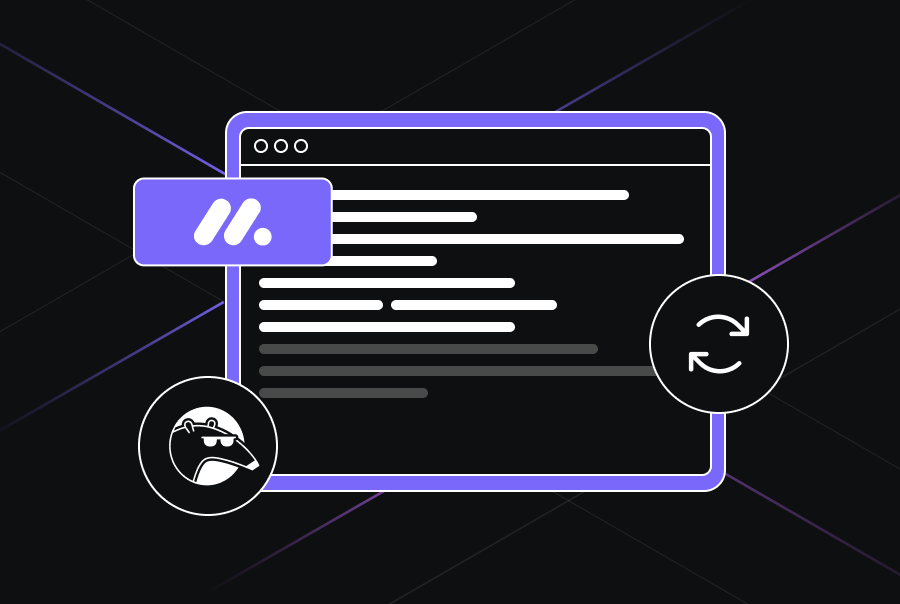Alpha Testing vs. Beta Testing: Understanding Key Differences and Benefits
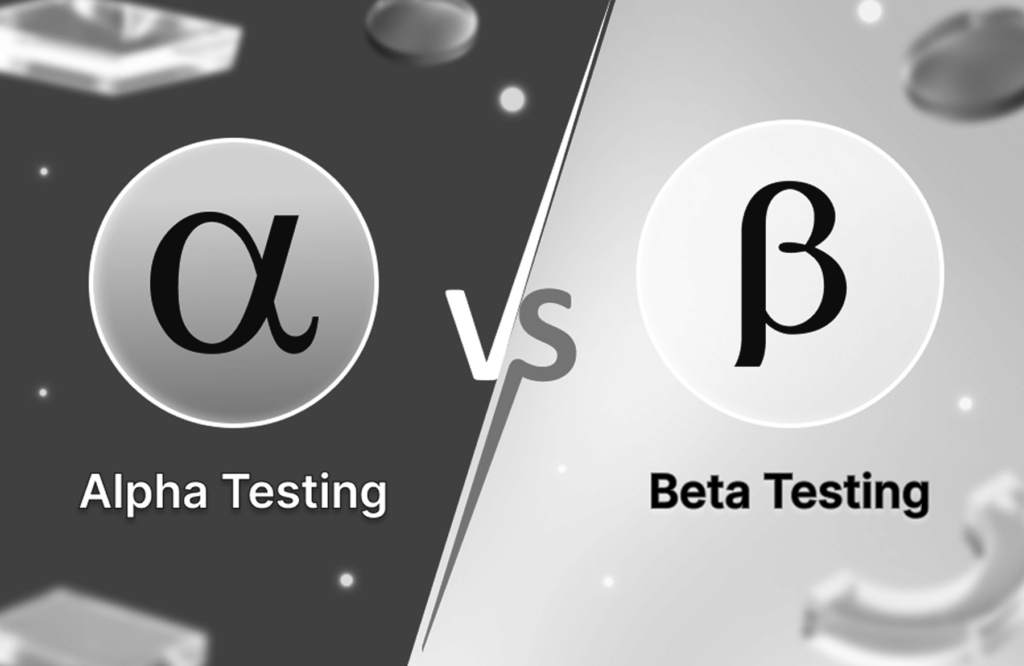

Testing is an essential part of modern software development. We conduct different types of testing from the initial development stages to customer delivery to ensure all the features work as expected and the application is reliable and secure. Alpha and beta testing are two of the final phases of this testing process.
This article discusses alpha and beta testing in detail, highlighting their differences and benefits to help you understand when and how to use them effectively.
What is Alpha Testing?
Alpha testing is an early phase of testing conducted internally within the organization. Although it is one of the final phases in the overall testing process, it is the first phase where the development team tests the entire software. Alpha testing can be divided into two parts:
- Testing by software engineers: In this part, software engineers use debugging tools to identify and resolve bugs as quickly as possible. The focus is ensuring the software functions according to its design and requirements.
- Testing by QA engineers: After developer testing, the QA team takes over to conduct further testing, including black box and white box testing methods. Black box testing assesses the software’s functionality without considering the application’s internal workings, while white box testing ensures all paths and conditions are tested thoroughly.
During alpha testing, the team aims to uncover any defects that might have been missed during earlier development stages. This includes testing for:
- Functionality: Verifying that all features work as intended.
- Performance: Ensuring the software performs well under various conditions.
- Security: Checking for vulnerabilities that could be exploited.
- Usability: Assessing the user interface and overall user experience.
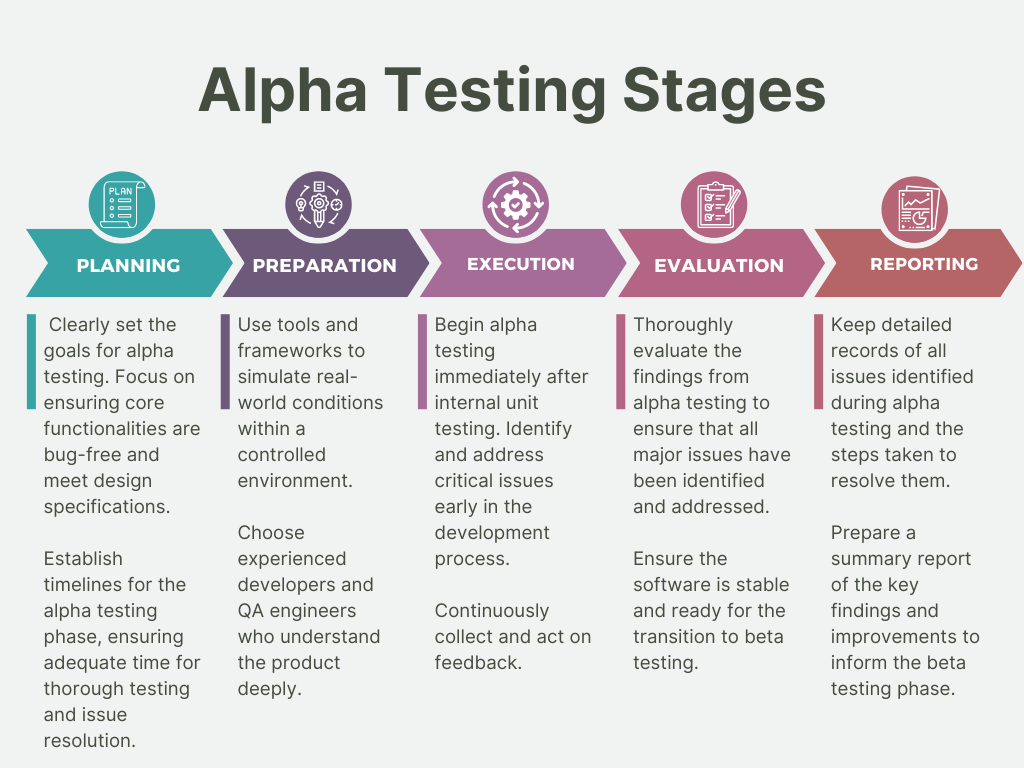
Benefits of Alpha Testing
- Early detection of critical issues: Identify significant issues early, such as security vulnerabilities, allowing for timely fixes before the production release.
- Validating core functions: Verifies that the software’s core functionalities operate correctly, ensuring its readiness for public release.
- Enhanced software quality: Alpha testing improves software reliability, functionality, and user experience by identifying and rectifying issues.
- Insight into software reliability: Ensures that the software performs consistently under various conditions, improving confidence in its reliability and robustness
When to Use Alpha Testing
Alpha testing is a critical step that should be strategically placed in the software development lifecycle. It is most beneficial when:
- Before a market release: Alpha testing allows you to catch and address issues before releasing a major feature or a new application to real users. It ensures only well-tested and stable features are presented to real users.
- In controlled environments: Alpha testing is a great option to test your applications within a controlled environment. Developers can simulate various scenarios and conditions to thoroughly test the application’s capabilities without the risks associated with real-world deployment.
[blog-subscribe]
What is Beta Testing?
Beta testing is the final validation phase of software development, where the product is evaluated by real users in their natural environment. This phase follows alpha testing and is crucial for gathering feedback on the product’s functionality, reliability, usability, and compatibility.
During beta testing, the following activities are typically conducted:
- Selection of beta testers: The users selected for beta testing should be from a diverse group representing the target audience.
- Goals and objectives: Clear goals need to be established for what the beta test should achieve, such as identifying usability issues or verifying performance under typical usage conditions.
- Scope of testing: The extent of the features and functionalities to be tested.
- Test environment setup: Beta testers use the product in their environments, which helps identify issues that occur in real-world settings.
- Test scenarios and cases: Realistic scenarios and use cases are created to guide the testers in using the product and identifying potential problems.
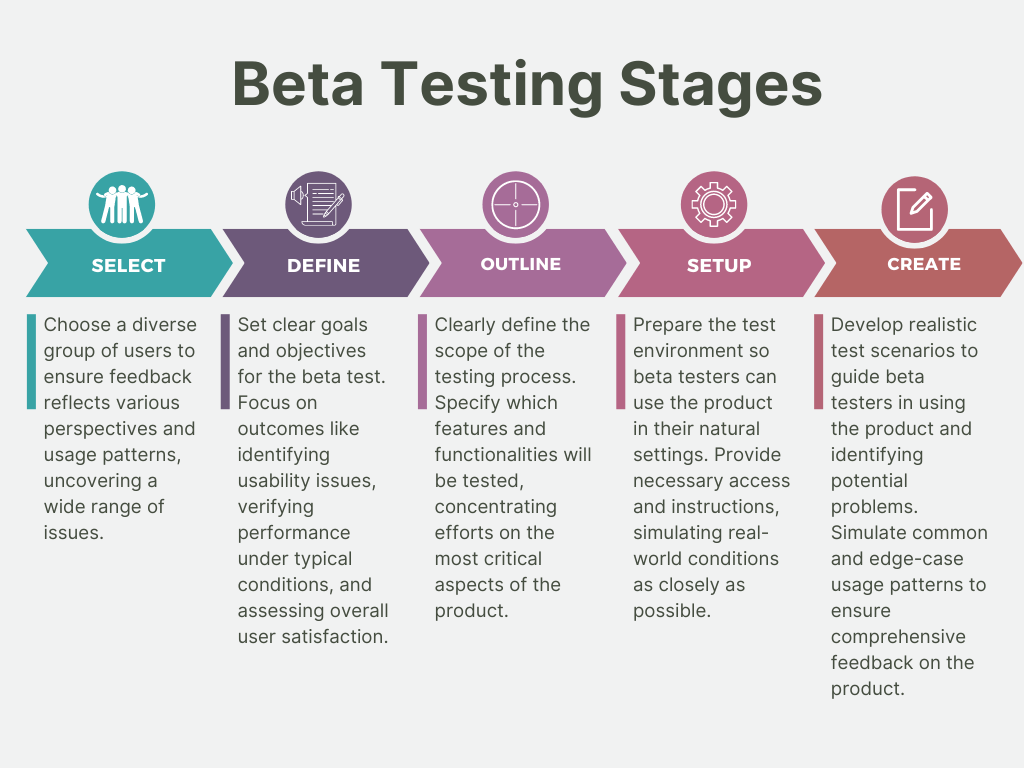
Benefits of Beta Testing
- Identification of hidden issues: Beta testing can reveal hidden and corner-case issues that are challenging to find during manual testing.
- Real-world user feedback: Users test beta applications on their devices, providing feedback developers might miss.
- Building user community: Improves software quality and promotes a relationship between developers and users.
- Reduce cost: Reduces the cost of identifying issues before the software goes into full production.
- Risk reduction: It reduces the risk of product failure through customer validation and helps test post-launch infrastructure.
When to Use Beta Testing
Beta testing is a crucial phase that should be seamlessly integrated into the software development lifecycle. It is most useful when:
- Post-alpha testing: Following alpha testing, beta testing offers an opportunity to fix any remaining issues before the software is released. It helps address bugs or performance issues not caught during alpha testing.
- Real-world testing: Beta testing is the best option for getting feedback about the application in the user’s environment. Developers can use this feedback to understand usability issues, feature gaps, and other problems that might not be hidden in a controlled environment.
Key Differences Between Alpha and Beta Testing
Understanding the distinctions between alpha and beta testing is crucial since we need to apply them in the correct stages of the development cycle.
1. Objectives and Goals
Alpha Testing
- Primarily focuses on the internal team identifying any remaining defects within the software.
- It’s an opportunity to fix any issues before the application is released.
Bets Testing
- Beta testing aims to collect feedback from external users
- Addresses any unforeseen practical issues when real users interact with the application.
2. Testing Environments and Participant Roles
Alpha Testing
- The environment is usually a simulated or controlled setting within the organization.
- The participants are mainly developers and QA engineers with an in-depth understanding of the software.
Beta Testing
- Takes place in a real-world environment, where the end-users test the application.
- The participants are real users who represent the target market.
3. Contribution to Development Process
Alpha Testing
- Contributes to the development process by improving the software’s core functionality and design specifications.
- Fixes technical flaws that could degrade the software’s performance.
Beta Testing
- Provides insights into the user’s perspective, highlighting areas for improvement that may not be apparent in a lab setting.
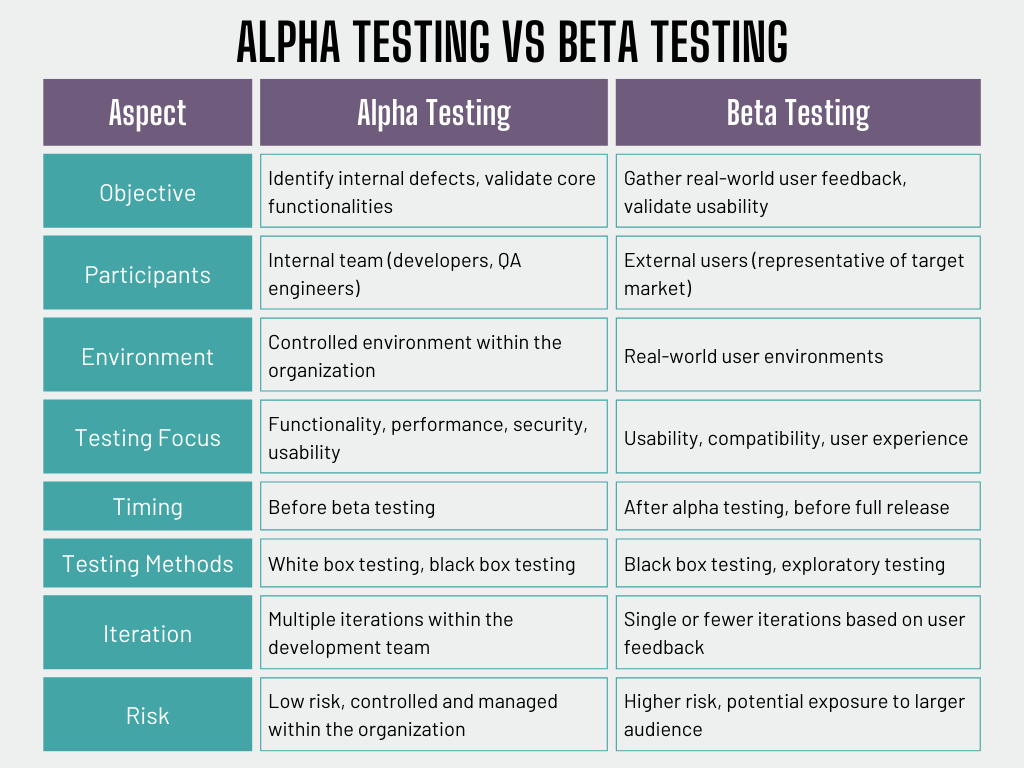
Best Practices for Implementing Alpha and Beta Testing
Here are a few best practices you can follow to improve the effectiveness of your testing phases:
Tips for Effective Alpha Testing
- Define clear objectives: Clearly understand what you aim to achieve with alpha testing. For example, set specific goals to ensure all core features are bug-free.
- Create a controlled environment: Ensure the testing environment is well-managed, using tools and frameworks that simulate real-world conditions. You can use Docker to simulate different operating systems and configurations.
- Involve the right participants: Select participants who understand the product and can provide valuable feedback. These should include experienced developers and QA engineers who can identify obvious and subtle issues.
Tips for Effective Beta Testing
- Select a diverse user group: Involve users from different backgrounds for varied feedback. This diversity helps uncover various usability issues and performance concerns.
- Monitor feedback closely: Act on feedback to make necessary improvements. Use tools like user feedback forms, bug-tracking systems, and analytics to gather and respond to feedback.
- Ensure continuous communication: Keep in touch with beta testers for ongoing feedback. Provide regular updates and maintain open communication lines like Slack or email newsletters to keep testers engaged and informed.
Integration into the Development Lifecycle
Integrating alpha and beta testing into the development lifecycle ensures continuous improvement and thorough evaluation. Here’s how to seamlessly incorporate these testing phases:
1. Planning and Preparation
- Define Objectives: Set transparent alpha and beta testing goals during the project planning stage.
- Timelines: Establish realistic timelines and criteria for each testing phase to keep the project on track.
2. Alpha Testing Integration
- Initial Integration: Start alpha testing right after internal unit testing to catch critical issues early.
- Iterative Feedback: Use feedback from alpha testing to refine and improve core functionalities iteratively.
3. Transition to Beta Testing
- Pre-Beta Review: Conduct a thorough review of post-alpha testing to ensure readiness for external evaluation.
- Plan Beta Testing: Select diverse beta testers, define the scope, and set clear goals.
4. Executing Beta Testing
- Deployment: Release the beta version to external users and support them for smooth testing.
- Gather Feedback: Use surveys, bug-reporting tools, and direct communication to collect real-world feedback.
5. Final Review and Launch
- Assessment: Ensure all critical issues from beta testing are resolved.
- Readiness Check: Confirm the product meets all release criteria.
- Launch: Release the software and monitor for any post-launch issues.
This streamlined integration ensures you release a high-quality application with minimum issues to the end user.
Conclusion
Alpha and beta testing are crucial stages in the software development lifecycle. Each phase plays a unique role in ensuring the product’s quality, functionality, and user satisfaction. Understanding these testing stages’ key differences and benefits helps developers implement them effectively for high-quality software.
